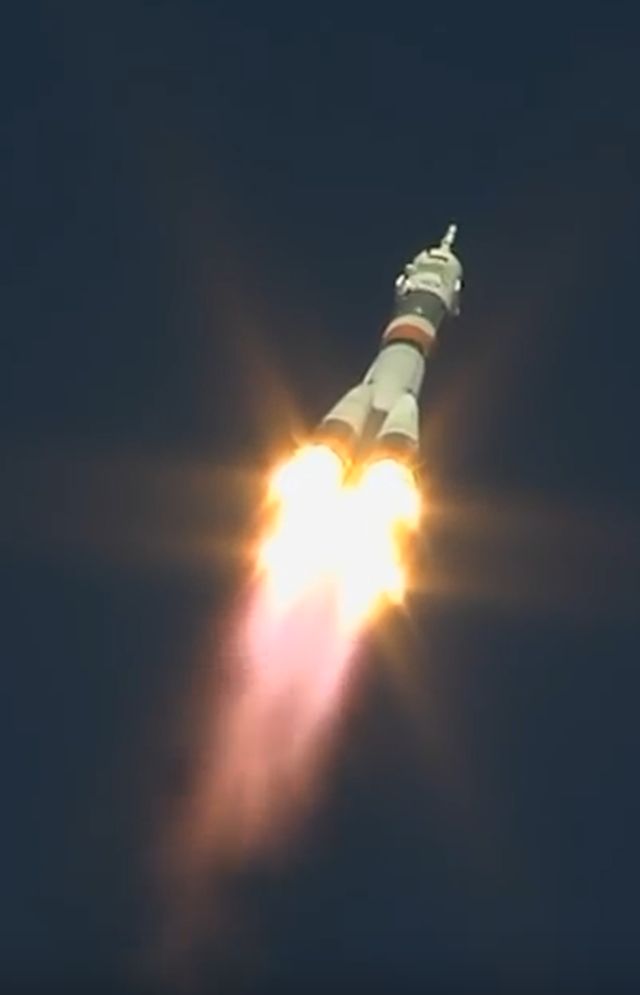The Soyuz MS-10 spacecraft carrying crew to the ISS was aborted shortly after launch on Thursday, Oct. 11th when its booster failed. The spacecraft executed an emergency ballistic landing with a sharp angle of descent. Both crew members on board—American astronaut Nick Hague and Russian cosmonaut Alexey Ovchinin—exited the capsule safely and are in good condition.
The launch took place at the Baikonur Cosmodrome in Kazakhstan at 2:40 pm. Just over a minute after the launch, the spacecraft’s booster failed and the launch was aborted. Search and rescue teams went into action and retrieved the astronauts by helicopter.
A NASA statement on the aborted launch stated: “NASA Administrator Jim Bridenstine and the NASA team are monitoring the situation carefully. NASA is working closely with Roscosmos to ensure the safe return of the crew. Safety of the crew is the utmost priority for NASA. A thorough investigation into the cause of the incident will be conducted.”
This video shows the launch of the Soyuz MS-10 from the Baikonur Cosmodrome. The launch was proceeding normally until the first mention of booster failure at about the 3:30 mark.
Following the safe emergency landing, NASA Administrator Jim Bridenstine tweeted:
I could not be more proud of the @NASA family today. So many great people, properly trained and equipped, operated effectively according to procedure to make sure our crew got home safely to their families. It’s truly humbling to lead this incredible agency. https://t.co/8uFDOr4T3g
— Jim Bridenstine (@JimBridenstine) October 11, 2018
Hague and Ovchinin were travelling to the ISS to join three other crewmates for ISS Expedition 57. This was Ovchinin’s second trip to the station, and Hague’s first trip. Hague is an Air Force Colonel who completed his astronaut training in 2015.
German Astronaut Alexander Gerst, who is onboard the ISS, captured these images of the failed Soyuz launch.
Bin froh, dass es unseren Freunden gut geht. Danke an >1000 Rettungskräfte! Heute hat sich wieder gezeigt, wie großartig die Soyuz ist: Trotz Fehlstart wurde die Crew sicher zur Erde zurückgebracht. Raumfahrt ist hart. Aber wir müssen weitermachen, zum Wohle der Menschheit. pic.twitter.com/0J5qQCn8gB
— Alexander Gerst (@Astro_Alex) October 11, 2018
In English, Gerst says, “I’m glad our friends are doing well. Thanks to >1000 rescue workers! Today it has been shown again how great the Soyuz is: despite a misstart, the crew was safely brought back to Earth. Space travel is hard. But we have to keep going, for the sake of mankind.”
This is the first time a Soyuz craft has failed. But the emergency ballistic landing was executed properly, and rescue teams pre-deployed along the Soyuz’s flight path went into action quickly. The astronauts were exposed to increased g-force during the descent, but were otherwise unharmed. They experienced 6.7 g’s which is about equal to what Apollo astronauts felt during re-entry.
A tweet from Roscosmos shows the two astronauts resting comfortably, and looking like they’re in good spirits, despite what must have been a difficult experience. The image shows them sitting on a couch, hooked up to blood pressure monitors and oxygen monitors.
#??????10: ????????? ?????????? ??????? ??????? ? ????????? @NASA ??? ???? ?????? ????????? ? ?????????? ? ???????? ???????????? ????? ???????.
??????????? ???????? ?????????? ??????? ??????? (@Rogozin) ?????? ??????? ? ??????????????? ??????????? ?? ????????. pic.twitter.com/b1IzKZZI8O
— ????????? (@roscosmos) October 11, 2018
Roscosmos say they are forming a commission to investigate the launch failure.

